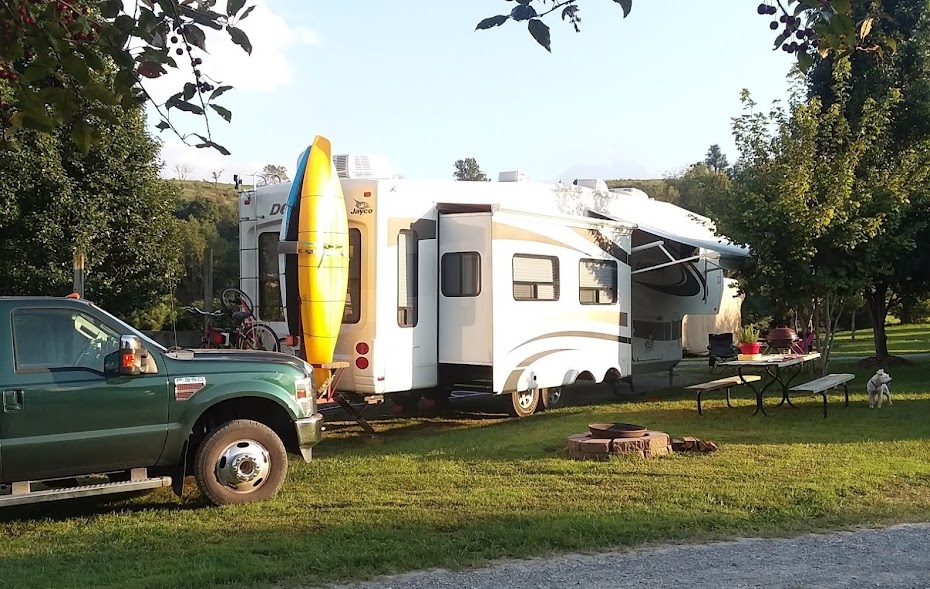“This is just a gravel pit!” “It
looks like the moon or Mars or something!” Darlene was having a bad
day because of allergies & the heat when we pulled into the
Imperial Dam LTVA (long term visitors area) north of Yuma, AZ. And
to be honest, it is a rather stark setting the first time you see it.
But hundreds of RVers show up to spend the entire winter here (up to
6 months). There must be something to like here.
Actually there's a LOT here to like.
 |
| Our campsite is at the blue dot |
“The Imperial Dam Long
Term Visitor Area (LTVA) was created in 1983 to fulfill the needs of
winter visitors and to protect the local desert ecosystem from
over-use. The campground is approximately 3,500 acres in size, flat
landscape, sparsely vegetated with plants such as Creosote bushes,
Palo Verde trees, Ironwood trees, Mesquite trees and various species
of cacti.”
Camping here is
“dispersed.” In other words, there are no proscribed campsites.
You just put your rig where you want, being courteous to any
neighbors who are already in place.
There are no hookups, so you
have to be self-contained. Many folks have solar power and almost
all have a generator. Some of the area is absolutely free camping,
other areas are $40 for 14 days, others choose to pay $180 for 6
months. Any way you go it's a cheap place to spend time.
 |
| View out our door |
We had heard of this
location (as opposed to the (in)famous Quartzsite, AZ) at a Good Sam
Samboree last summer. So we intended to come check it out and sit
for a week or so. It has been enjoyable not packing up and moving.
We found plenty of time to make friends, read books, even take a nap
or two. A couple days we experienced high winds (20-40 mph) and just
hunkered at that time.
On one day when the winds
had adversely effected Darlene, I got in the truck and followed a
wilderness road about 10 miles to Ferguson lake. It was a fun ride;
not 4 wheel rock crawling, but 4 wheel high range rough road. It
took about 1½ hours each way.
 |
| Ferguson Lake - Colorado River |
 |
| First responders killed on search & rescue mission |
 |
| End of the road |
Another afternoon we went
into Los Algodones, Mexico, a very tourist friendly town. Many
snow-birds come to this area just to go to Mexico for dental work,
eye glasses, prescription medicine, and liquor at ridiculously low
prices. The Mexican food was great, too.
Yesterday, in the cooler
morning hours, I took a hike to investigate Senator Wash, which runs
through the LTVA. From the surrounding mesas, the wash looks like a
wide, dry river bed.
But in the bottom of the wash there is a
channel (two actually) cut down into the rock another 10-20 feet.
 |
| Where the channel divides into two |
 |
| Looking up! |
 |
| desert flower |
 |
| Notice the rock layer on the bottom under the sedimentary |
 |
| What does a rusty pop can in the bottom of the wash tell you? |
It
took me over 3 hours to hike up the wash & back, about 4 miles.
I had FUN. I also chose to take an afternoon siesta.
 |
| I hiked from the rt. arrow up the wash to the lft. arrow & back |
But now our time here is
up. Temps are routinely hitting 90 by late afternoon and you can't use A/C unless you run the generator all the time. And that would label you as a wimp! It cools off to the 50's at night. But lots of folks are moving
northerly to stay in a more moderate climate. Tomorrow we will be
moving west to San Diego and then up to Yucca Vallley, CA.
But
that's another post.
 |
| Moon-rise in the desert |
 |
| Moon-set in the desert |





























































